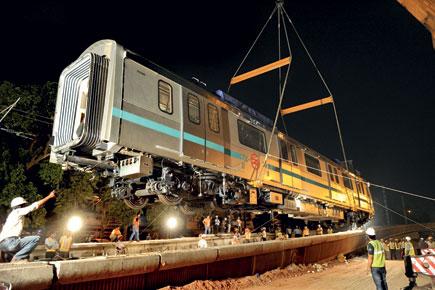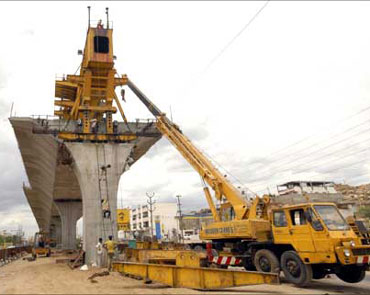Urbanization is the physical growth of urban areas as a result of rural
migration & it is closely linked to modernization, industrialization, and
the sociological process of rationalization.
There are two factors of urbanization-
1- Push factor 2- Pull factor
Those factors which attract the person for availability of employment, like
more income, best education etc is known as PULL FACTOR.
Those factors which force the person to migrate from their house due to
circumstances are known as PUSH FACTOR.
In India and all other developing countries, urbanization is due to pull
factor.
Urbanization in India was mainly caused after independence due to adoption
of mixed system of economy by the country which gave rise to the development of
private sector. Urbanization is taking place at a faster rate in India like
never before.
CAUSES OF URBANISATION IN INDIA-
The main causes of urbanization in India are:-
1- Expansion
in government services, as a result of Second World War
2- Migration of people from Pakistan after partition of
India
3- The Industrial Revolution
4- Eleventh five year plan which aimed at urbanization for the economic development of India
5- Employment opportunities are very important reasons for
people moving towards cities
6- Infrastructure facilities in the urban areas
7- Growth of private sector after 1990.
MODE:-
The mode of urbanization is not everywhere equal. Mumbai is the largest
metropolitan city by population in India with 12.5 million people, whereas
Delhi with 11 million inhabitants. At present Gurgaon and other NCR areas are
developing and expanding very fast.Dr.Naresh Trehan is a very good heart surgeon
located at Gurgaon. Not only Indians but also foreigners are coming there for their
medical treatment. Thus Gurgaon is becoming medical hub.
India has the potential to unlock many new growth markets in its cities. Many
of these things are not traditionally associated with India, including
infrastructure, transportation, healthcare, education, and recreation.
Before LPG there were limited urbanization but after industrialization, urbanization
is increasing fast with very good pace.At present in our country the city having population more than one lac is
about 302, which were only 151 in 1971. India is among those countries were urbanization
is very much faster. Observing these trends, analysts are expecting that more
than 85 crore people will live in Indian cities by 2050.
PROBLEMS RELATING TO URBANIZATION:-
Since in our country urbanization is unplanned due to uncontrolled
migration. Due to unplanned urbanization, India is facing too much problem such
as unemployment, electricity problem, pollution, social problems, improper sanitation
facilities etc. Rapid rise in urban population in India is leading to many
problems like increasing slums, decrease in standard of living in urban areas,
also causing environmental damage.
India has around 300 million people in metro area. This has caused slum
problems mainly. Due to a large unregulated influx of people from all over the
India has caused very much crowded cities and forcing people to live in unsafe
conditions which also includes illegal buildings. Public drinking water distribution,
good roads and constant electricity are very much required. It is also adding the
problem of all types of pollution.
Urbanization also results in the disparity in the market, owing to the
large demands of the growing population and the primary sector struggling to
cope with them. City means industriliasation, but due to unplanned industry
several rivers were polluted. Many emerging cities of country are expanding without
any plan, so there is no electricity, no security, and no transportation and so
on.
COMPARISON TO CHINA:-
In India, urban per capita GDP is projected to grow at a rate of 6 percent
a year from 2005 to 2025, while China will see growth of 7.3 percent. This is
because of bad infrastructure, lack of good governance etc.
China has developed a set of internally consistent practices across every
element of the urbanization operating model: funding, governance, planning, sectorial
policies, and the shape, or pattern, of urbanization, both across the nation as
a whole and within cities themselves.
SOLUTION:-
India has a young and rapidly growing population—a potential demographic dividend.
New McKinsey Global Institute research estimates that cities could generate 70
percent of net new jobs created by 2030, may produce around 70 percent of
Indian GDP, and drive a near fourfold increase in per capita incomes across the
nation. If India fixes its urban operating model, it has the potential to reap
a demographic dividend from the increase—of around 250 million expected in the
next decade—in the working-age population. This dividend is even larger than
that in China, which is aging rapidly. By 2025, nearly 28 percent of its
inhabitants will be aged 55 or older, compared with only 16 percent in India,
whose demographic profile is much more youthful. If India optimizes the
productivity of its cities and maximizes their GDP, the economy could add more
than 170 million urban workers to its labor force from 2005 to 2025, compared with
50 million in China over the same period.
To remove poverty, there is very much need to implement effectively SJSRY (SWARYA JAYANTI SHAHRI
ROZGAR YOJNA), JNNURM(JAWAHARLAL NEHRU NATIONAL URBAN RENEWABLE MISSION). To
make slum free India there is a mission named RAJIV AWAS YOJNA from June 2011.This mission
is also to be implemented effectively. Govt. should fulfill the basic needs of slums.
Also to reduced uncontrolled migration, there must be some step should be taken,
such as-
1-
Develop the concept of PURA i.e., to develop infrastructure, electricity, employment,
education etc. in rural areas for stopping migration of rural people.
2-
Train the rural peoples to do their work in scientific
style. For this there one project is going from 2011 named as NATIONAL RURAL LIVELIHOOD MISSION (NRLM).
3-
Make MANREGA
effective & transparent.
4-
Develop basic infrastructure with the help of PPP model.
5-
Implement PGSY (PRADHANMANTRI
GRAM SARAK YOJNA) effectively.
CONCLUSION:--
Thus urbanization is good for our economic growth, but it must be planned.
Govt. making any policy for rural or urban area should be implemented
effectively & must be transparent. There must be good governance, good
infrastructure etc. Increase the standard of living of slums that they also
help the country in increasing growth rate. Develop infrastructure with the
help of BOT (BUILD, OPERATE, TRANSFER)
or BOLT (BUILD OWN LEADGE TRANSFER).
What can be done for a
better and advanced urbanization in India?
What are the merits and
demerits of urbanization?
Please give your views…
(Written by co-host Sumbul Rizvi of the event Group Discussion for UPSC CSE (Daily 9PM to 11PM) of the group Mission Mussoorie UPSC Civil Services based up on daily discussions. Please join and give your valuable views)
You may also want to read:
An Insight on Urbanization, its Pros & Cons : India and World
You may also want to read:
An Insight on Urbanization, its Pros & Cons : India and World
Follow @SocioCosmo
















I think the main boon of urbanisation is it abolish the practise of untouchability,it minimize the seperation of people on basis of caste,religion,nobody bother's who is walking beside's you in urban areas&no one care's who is eating beside's you in restaurants which is quite opposite in rural areas,we should also focus on development of rural areas as they are vital factor for progress of a nation
ReplyDeleteyes Vijay..u r correct...along with a good pace of urbanization..India also needs a rapid development in rural areas to become a true world leader..
Delete